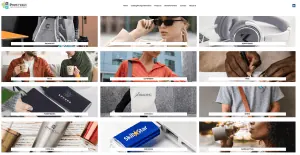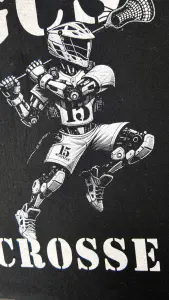Screen Printing Techniques: Halftones, Spot Color, Simulated Process & Cost Factors
Table of Contents
Screen Printing Techniques – What Is Screen Printing?
Screen printing is a versatile, time-tested method of transferring ink onto garments or other materials through a mesh screen. It delivers bold, vibrant, long-lasting results — especially for bulk orders. But not all screen printing is the same. Different techniques are used depending on the type of artwork, color count, and budget.
In this guide, we’ll cover key screen printing methods like halftones, spot color, and simulated process, and explain why the number of ink colors directly affects cost.
Spot Color Printing
What It Is:
Spot color is the most common form of screen printing. Each ink color is printed using a separate screen with a solid color of ink. It’s best for bold graphics, logos, or text with limited colors and no gradients.
When to Use:
- 1 to 4 solid colors
- Logos, text, simple graphics
- Team or event shirts
Benefits:
- Vibrant and opaque colors
- Clean edges and strong contrasts
- Cost-effective for low color counts
Halftone Printing
What It Is:
Halftones use small dots of varying sizes to simulate gradients and shading with a single ink color. The technique allows for more depth and realism while still using fewer screens.
When to Use:
- Single-color designs that need shading
- Vintage or grayscale looks
- Budget-conscious designs needing depth
Benefits:
- Creates gradient-like effects using one color
- Saves on screen and film costs
- Great for black ink on light garments
Simulated Process Printing
What It Is:
Simulated process mimics full-color imagery using 5–7 spot colors layered with precision. It uses halftones to blend inks and create the illusion of continuous tone images — even photorealism — on both dark and light shirts.
When to Use:
- Detailed artwork with gradients or full-color appearance
- Photorealistic images
- Dark garments
Benefits:
- Looks like a digital print, but uses spot inks
- Works on any color garment
- More color control than CMYK process
4-Color Process (CMYK)
What It Is:
CMYK uses four translucent inks — cyan, magenta, yellow, and black — layered using halftones to produce full-color imagery, much like a printer. Best on white or light garments.
When to Use:
- Light-colored shirts
- Photographs or full-color prints
- Designs with subtle color transitions
Drawbacks:
- Less vibrant on dark garments
- Color shifts can occur
- Requires precise calibration
Why More Colors Cost More
Screen Setup Costs
Each ink color requires:
- A separate screen (with emulsion and exposure)
- Film output for each layer
- Additional press setup time
That means:
- A 1-color print = 1 screen and 1 setup
- A 6-color print = 6 screens and 6 setups
Ink & Production Time
More colors also mean:
- Longer production times
- Increased chances of misregistration (more quality checks)
- Higher material usage
💡 Even with advanced techniques, reducing the number of screens — like using halftones or simulated process — can dramatically cut costs without compromising print quality.
Bonus: Our In-House Color Optimization Software
We use professional separation software to reduce unnecessary colors while maintaining visual fidelity. Whether you’re working with RGB, gradients, or detailed illustrations, we can often:
- Convert full-color designs to 3–4 color simulated process
- Reconstruct gradients using halftones
- Suggest cost-saving tweaks without sacrificing your design
Not Sure Which Method Is Right?
We’ll guide you to the right screen printing technique based on your:
- Artwork
- Shirt color
- Budget
- Desired turnaround
👉 Start a custom quote or browse screen print apparel to see pricing based on your design.
Related Guides
Frequently Asked Questions
The most widely used technique is plastisol screen printing. It delivers vibrant, opaque prints on both light and dark garments and is known for durability and versatility.
Halftone printing simulates gradients or photo-like images using small dots. It’s ideal for printing grayscale images or full-color artwork with a limited number of ink colors.
Spot color uses individual screens for each solid color, providing bold and accurate colors. CMYK (4-color process) blends cyan, magenta, yellow, and black to create full-color images—great for photos but more complex.
Yes, especially with high mesh count screens and techniques like simulated process printing, screen printing can achieve very fine details and photographic effects. Direct to film (DTF) is also a great method for high detail full color prints. You can read about screen printing versus dtf in our guide.
Cotton garments are ideal for most techniques. However, poly-blends and performance fabrics may require specialty inks or additives to avoid dye migration and achieve proper adhesion. You can read more about garment selection in our best shirts for screen printing arments guide.


